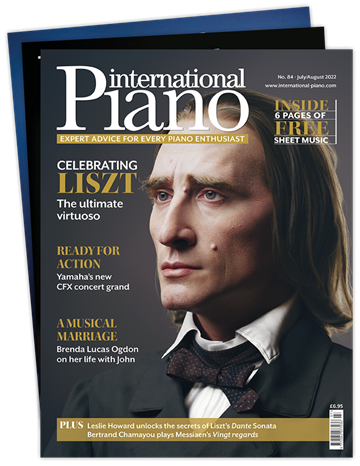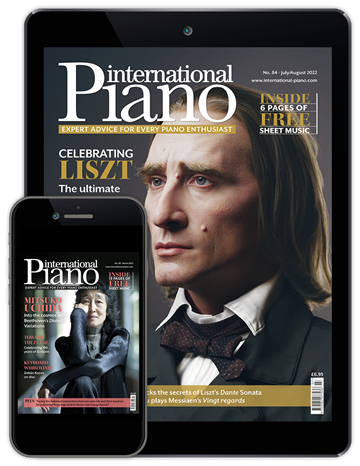Review - Olga Samaroff and Frank La Forge: ‘The Complete Recordings’
Jonathan Dobson
Monday, October 7, 2024
APR is to be congratulated for shining a light on these two remarkable and little-known pianists

A fascinating double album from APR features the complete recordings of two American-born, European-trained pianists active in the first quarter of the 20th century: Olga Samaroff (1880‑1948) and Frank La Forge (1879‑1953). Of the two, Samaroff will possibly be better known – her complete recorded legacy appeared on the Opal label years ago – but as almost none of her original 78s were published in the UK or in Europe, I suspect that many may not have heard of her at all. If not, then this issue is certainly well worth hearing. Texan-born Samaroff – whose real name was Lucy Hickenlooper – had impeccable credentials, studying in Paris with Alkan’s illegitimate son Élie-Miriam Delaborde and becoming the first American woman admitted to the Paris Conservatoire. She knew everyone – Mahler, Richard Strauss, Nikisch, Saint-Saëns, Fauré, Widor – and made her sensational debut at Carnegie Hall in 1905. Her performing career lasted barely 20 years, and as well as marrying Leopold Stokowski in 1911 she was one of the most celebrated pianists of her time.
Samaroff made a series of acoustic recordings for the Victor Talking Machine Company in the USA between 1921 and 1924, and then a final series of four electrically recorded discs for Victor in 1930 after her retirement from the concert platform. Although the acoustic sessions were recorded a century ago, the sound is superb for the time and Samaroff’s sheer artistry, verve, personality and rhythmic vitality leap from these old recordings in a quite remarkable manner. As is so often the case with pianists of this time, the majority of her recordings are short genre pieces – the longest works she recorded being Chopin’s Third Ballade and the 12th Hungarian Rhapsody of Liszt. Her playing throughout is superb; and in spite of a few 19th-century pianistic conventions such as breaking the hands and anticipating the basses, her pianism doesn’t appear at all dated. Her technical finish and musical imagination are genuinely astonishing and her huge, beautiful, unforced tone comes through the acoustic recording process with real clarity. Her final series of discs from 1930 – although recorded electrically and revealing her colour and tonal gradations more faithfully than the acoustic process – shows that the best was already past, with the exception of a magical performance of Griffes’s ‘The White Peacock’. Samaroff spent the rest of her life teaching at the Juilliard School of Music and the list of her students reads like a who’s who of 20th-century pianists, including Tureck, Weissenberg, Kapell, Lewenthal and Anievas.
Frank La Forge studied with Leschetizky at the same time as Mark Hambourg, Ignaz Friedman and Ossip Gabrilowitsch. He worked largely as an accompanist, but early on he pursued a solo career and made a short series of acoustic recordings for Victor between 1908 and 1913, plus two sides for the new electrical process in 1925. I don’t think La Forge’s complete recordings have ever been reissued before. The recordings don’t have the freshness and clarity of Samaroff’s later acoustic discs, but not even the poor recording quality can hide La Forge’s technical finish, sensitive musicianship and elegant line. His performance of MacDowell’s F minor Étude de concert, Op 36, is a technical tour de force, and although the majority of his recorded repertory consists of popular classics by composers such as Chaminade and Gottschalk, there are exquisite performances of Chopin’s D flat major Nocturne, Op 27 No 2, and the Berceuse from 1911 and 1913 respectively, which amply demonstrate that La Forge was up with the best of the Leschetizky products. Nevertheless, La Forge’s playing lacks something of the chutzpah that shines through Samaroff’s recordings: his subsequent career as a collaborative artist perhaps suggests that he realised his own limitations.
APR is to be congratulated for shining a light on these two remarkable and little-known pianists. The transfers and booklet notes as always from APR are superb and these century-old recordings have scrubbed up surprisingly well.
This article originally appeared in the Autumn 2024 issue of International Piano. Never miss an issue – subscribe today






